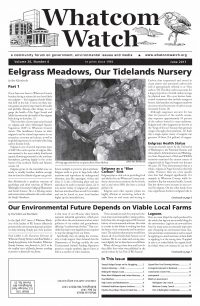by Lorraine Loomis
An earlier start to the annual salmon season-setting process helped the tribal and state salmon co-managers finish their work right on time this year.
Steadily shrinking salmon populations have made the process of establishing fishing seasons increasingly difficult. Last year’s process required a month of overtime negotiations that led to a delay in opening some sport fisheries.
This year’s returns, while marginally better than the historic lows of the past couple of years, are still down. Drought, poor ocean conditions and climate change have all contributed to the decline. The root of the problem, however, lies in the fact that we are losing salmon habitat faster than it can be restored.
The earlier start enabled us to address species like pink and coho sooner in the process. That provided us with extra time to deal with more at-risk species such as Puget Sound chinook, which have continued to decline since being listed under the Endangered Species Act since 1999.
For our part, we will again restrict all of our fisheries this year: commercial, ceremonial and subsistence. Commercial fisheries are important to our tribal economies while ceremonial and subsistence fisheries provide food for funerals, ceremonies and other cultural events.
Cutting these fisheries is painful, but conservation must come first so that there are salmon for future generations.
Some people blame nature for creating the conditions that have led to such poor returns the past few years. The truth is that these closures are the direct consequence of state, local and federal governments failing to stem the loss and destruction of salmon habitat for decades.
One way we can boost salmon productivity right now, especially for weak coho runs, is for the state to increase funding to open up habitat locked behind fish-blocking culverts.
The United States filed suit on behalf of the tribes in 2001 to require the state to fix hundreds of blocking culverts under state roads. Hundreds of failing state culverts continue to prevent salmon access to more than 1,000 miles of good habitat and harm salmon at every stage of their life cycle.
The federal court consistently upheld that the tribes’ treaty-reserved right to harvest salmon also includes the right to have those salmon protected and available for harvest.
The court gave the state 15 years to re-open 90 percent of the habitat blocked by its culverts. The state had been fixing culverts so slowly that it would take more than 100 years to finish the job.
Still, the state continues to appeal the ruling at every opportunity.
There’s not much we can do about the effects of weather, poor ocean conditions or climate change.
Doesn’t it make sense then to take action where we can, by preserving the habitat we have left and fixing fish-blocking culverts?
It’s a cop-out to blame nature for declining salmon populations. The true cause — and solution — can be found in a mirror.
___________________________________
Lorraine Loomis is chair of the Northwest Indian Fisheries Commission, www.nwifc.org.





























